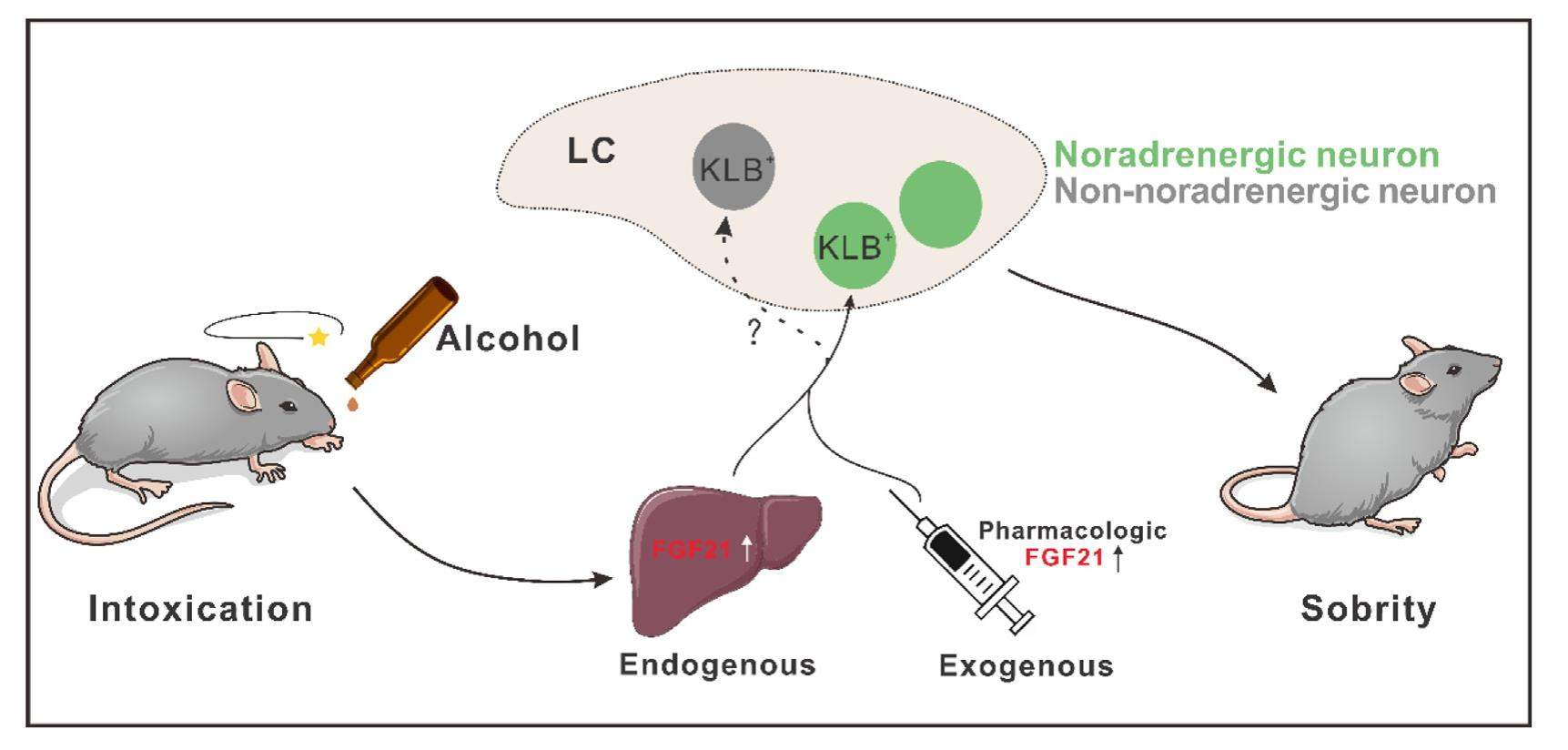
Liver-brain axis with alcohol: Role offibroblast growth factor 21 (FGF21)


Fibroblast growth factor 21 (FGF21) is a hormone that can balance nutrient fluctuations, control metabolic processes, and maintain energy homeostasis. Endogenous FGF21 is produced by a variety of cell types, including hepatocytes, adipocytes, bone cells, myocardial cells, and pancreas cells, and act on various effector tissues such as brain, adipose tissue, liver, heart, and skeletal muscle. The target that FGF21 interacts with is the cell-surface receptor composed of FGF receptors in complex with the single-pass transmembrane protein β-Klotho. These receptors are abundantly expressed, both in peripheral tissues and some regions of the CNS, such as the hypothalamus and amygdala and the locus coeruleus (LC). Physiologically, FGF21 can be induced by various metabolic stresses, including hunger, proteindeficiency, monosaccharides, andalcohol, by acting on β-Klotho receptor in corresponding tissues, ultimately exerting regulatory effects.
